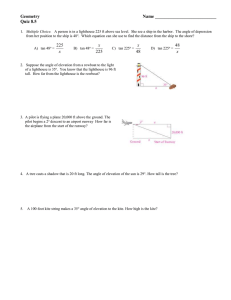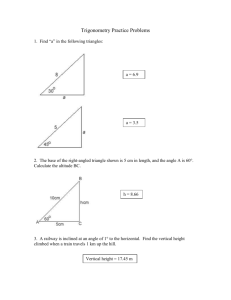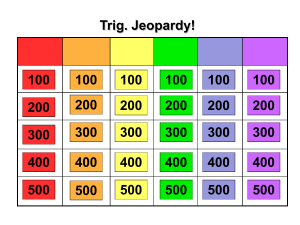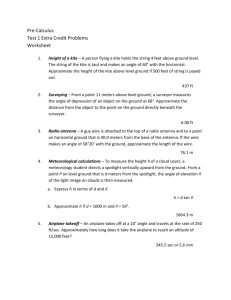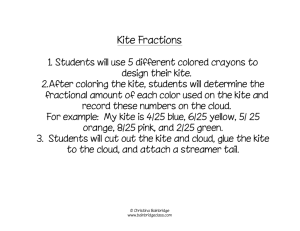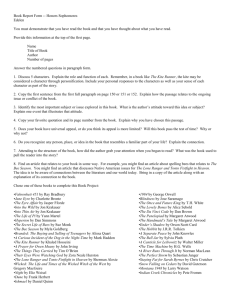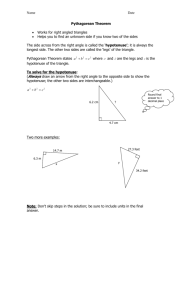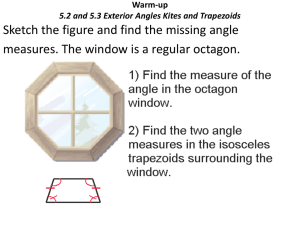(1) The angle of elevation from a point 230 feet from the base of a
advertisement
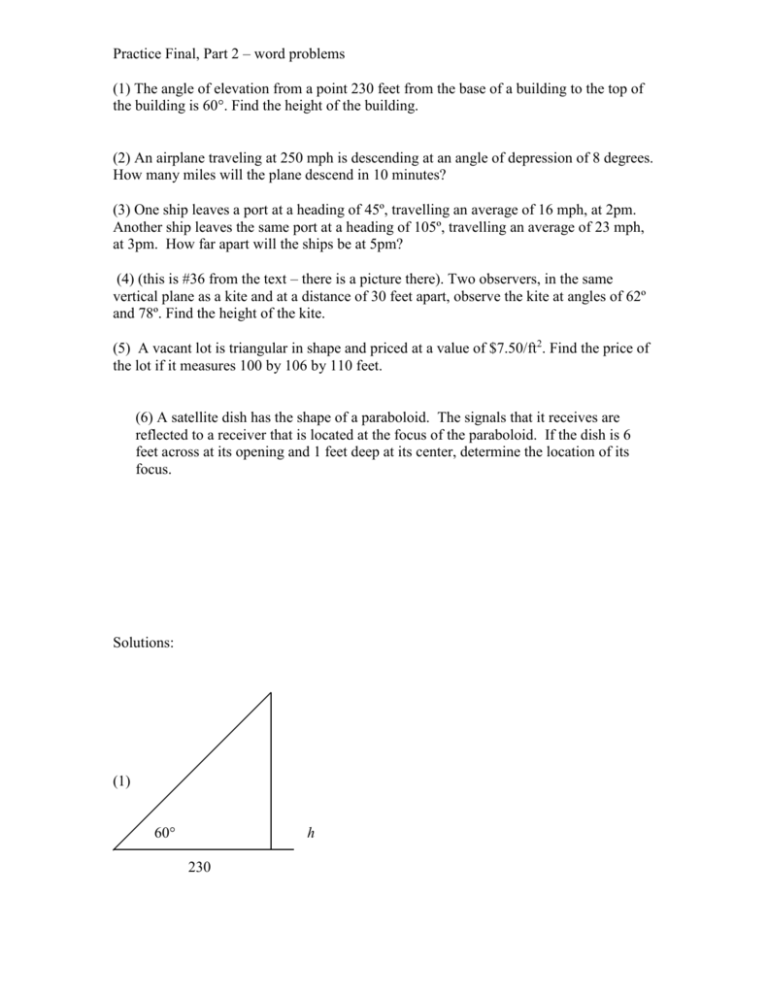
Practice Final, Part 2 – word problems
(1) The angle of elevation from a point 230 feet from the base of a building to the top of
the building is 60°. Find the height of the building.
(2) An airplane traveling at 250 mph is descending at an angle of depression of 8 degrees.
How many miles will the plane descend in 10 minutes?
(3) One ship leaves a port at a heading of 45º, travelling an average of 16 mph, at 2pm.
Another ship leaves the same port at a heading of 105º, travelling an average of 23 mph,
at 3pm. How far apart will the ships be at 5pm?
(4) (this is #36 from the text – there is a picture there). Two observers, in the same
vertical plane as a kite and at a distance of 30 feet apart, observe the kite at angles of 62º
and 78º. Find the height of the kite.
(5) A vacant lot is triangular in shape and priced at a value of $7.50/ft2. Find the price of
the lot if it measures 100 by 106 by 110 feet.
(6) A satellite dish has the shape of a paraboloid. The signals that it receives are
reflected to a receiver that is located at the focus of the paraboloid. If the dish is 6
feet across at its opening and 1 feet deep at its center, determine the location of its
focus.
Solutions:
(1)
60°
h
230
so
h
,
230
h 230 tan(60) 398.4 ft
tan(60)
(2) First, find the horizontal distance traveled by the plane d = rt, or
10
d 250 42 miles . Then set up this super cool triangle:
60
42
8º
d
It appears that
d
tan(8) ,
42
42 tan(8) d ,
d 5.9 miles
(3) We have the following geometric representation:
a
46
48
60º
With the following explanations:
distance = rate * time:
46 = 23*(5pm – 3pm)
48 = 16*(5pm - 2pm)
60º =105º - 45º
We have SAS, so we can solve using the Law of Cosines:
a 2 462 482 2(46)(48) cos(60),
a 2 8626,
a 93 miles.
(4)
Kite
b
Obs1 Obs2
62º 78º
30
Note that one angle in the triangle will be the complement of the 78º angle, and will have
measure 180-78 =102º, making the final angle 180 – (102+62) = 16º. We will then have
ASA, and can solve for the height of the kite using the Law Of Sines:
30
b
,
sin(16) sin(62)
sin(62)*30
b
,
sin(16)
b 96 ft
(5) The cost of the lot will be area * cost/ft2. We can find the area using Heron's formula:
1
100 106 110 158,
2
K 158(158 100)(158 106)(158 110),
s
K 4783
cost 4783*7.50 $35,869.57
(6) As we discussed in class, the cross-section ('slice') of the dish laying below the
receiver is a parabola, which is 6 feet wide. We could graph this cross-section as:
Because the graph points up, the square is on x and p > 0. The vertex (h, k) = (0,0),
and the equation will have form: x 2 4 py . We need to determine p – plug in (3,1)
and solve for it.
32 4 p(1),
9
4
is the distance from the vertex to the receiver/focus, that is 2.25 feet.
p
